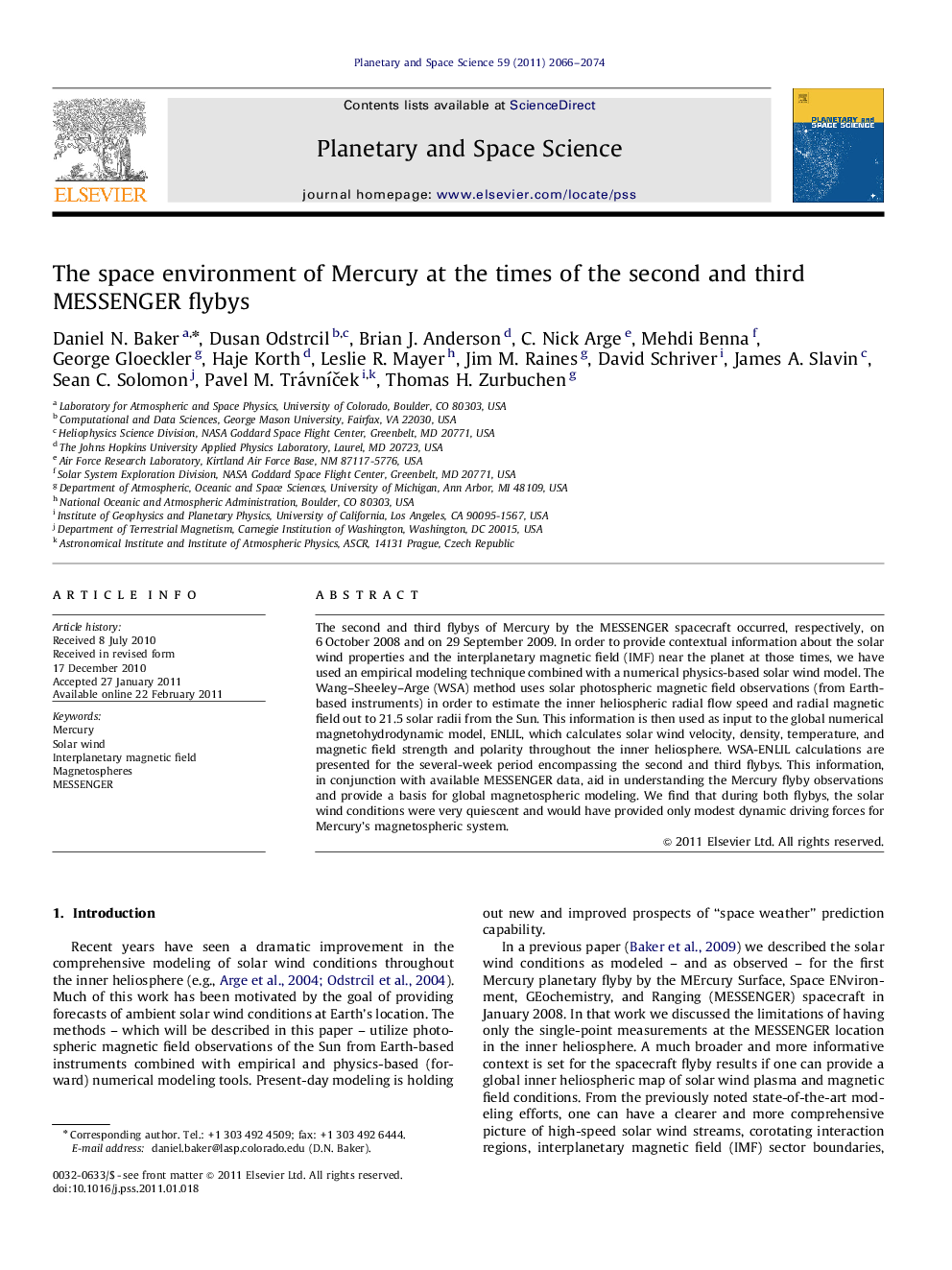| Article ID | Journal | Published Year | Pages | File Type |
|---|---|---|---|---|
| 1781613 | Planetary and Space Science | 2011 | 9 Pages |
The second and third flybys of Mercury by the MESSENGER spacecraft occurred, respectively, on 6 October 2008 and on 29 September 2009. In order to provide contextual information about the solar wind properties and the interplanetary magnetic field (IMF) near the planet at those times, we have used an empirical modeling technique combined with a numerical physics-based solar wind model. The Wang–Sheeley–Arge (WSA) method uses solar photospheric magnetic field observations (from Earth-based instruments) in order to estimate the inner heliospheric radial flow speed and radial magnetic field out to 21.5 solar radii from the Sun. This information is then used as input to the global numerical magnetohydrodynamic model, ENLIL, which calculates solar wind velocity, density, temperature, and magnetic field strength and polarity throughout the inner heliosphere. WSA-ENLIL calculations are presented for the several-week period encompassing the second and third flybys. This information, in conjunction with available MESSENGER data, aid in understanding the Mercury flyby observations and provide a basis for global magnetospheric modeling. We find that during both flybys, the solar wind conditions were very quiescent and would have provided only modest dynamic driving forces for Mercury's magnetospheric system.
Research highlights► We have performed numerical model (WSA-ENLIL) simulations of the inner heliosphere. ► This global model of solar wind is presently used for “space weather” predictions at Earth. ► The modeling provides crucial “context” information for MESSENGER mission at Mercury. ► Results provide detailed information for second (10/6/2008) and third (9/29/09) planetary flybys. ► We show good model agreement between model predictions and direct MESSENGER observations.
